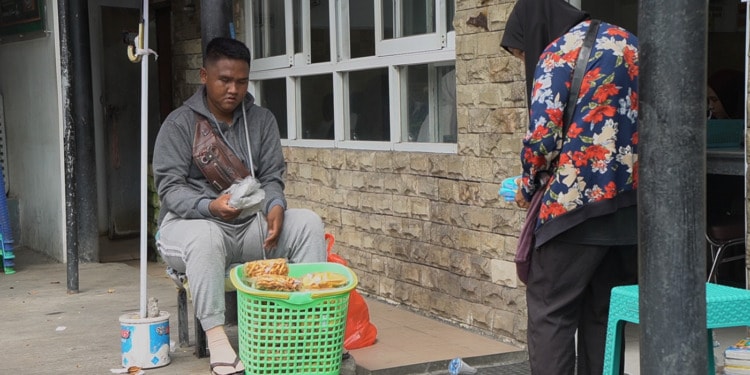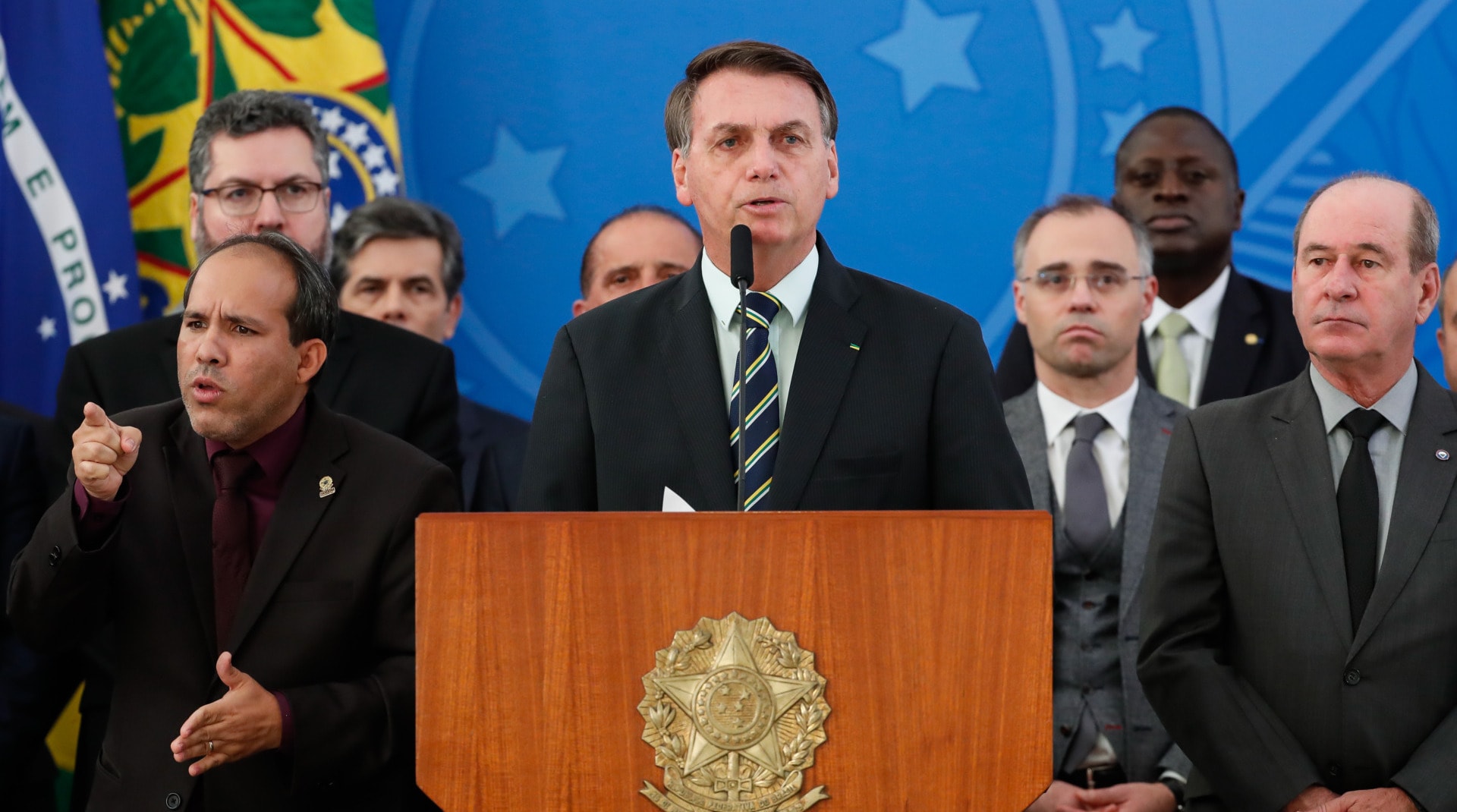“Despite my lack of functional arms, during the Seroja storm I was still able to use my legs to run. I am unaware of the fate of my disabled peers, specifically those who rely on wheelchairs and crutches… We must possess the capability to endure in such a vulnerable situation”.
When you hear first-person accounts from the disabled during weather disasters, like this one from Cyclone Seroja which struck Indonesia’s Nusa Tenggara Timur province in 2021, it magnifies the challenges — and vulnerabilities — of the disabled in extreme climate events.
Disabled people in Indonesia, who often live below the national poverty line, are disproportionately affected during a disaster.
Data shows they suffer up to four times more than the general population.
A 2023 Global Survey on people with disabilities and disaster indicates that 84% did not have a personal preparedness plan for disasters. Even with an adequate evacuation warning, only 39% had no difficulties in evacuating while 38% had some difficulties in evacuating, 17% faced many difficulties in evacuating, and 6% couldn’t evacuate at all.
Indonesia’s challenge
With its 76 active volcanoes and 17,000-plus islands, Indonesia faces significant financial and physical challenges in disaster management and mitigation.
Working closely with the United Nations Office for Disaster Risk Reduction, Indonesia now has an Integration of Protection, Gender and Inclusivity (PGI) in Anticipatory Action plan. This aims to accelerate the collection and use of gender, age and disability-aggregated data within a combined information system for disaster-responsive social protection.
However, the plan is not easily implemented.
Cyclone Seroja killed 181, left 47 missing and 225 injured. In addition, 58,914 people were displaced, and thousands of homes destroyed.
On the other island, the coastal city of Makassar is also prone to climate related hazards such as floods in the rainy season and lack of clean water in the dry season.
The island of Lombok, in Nusa Tenggara Barat province, is affected by sea level rise and the El-Nino effect, contributing to crop failure. Sea level rise has put the island at high risk, with medium flood hazards affecting 49% and high flood hazards affecting 24% of the area.
During disasters, death tolls often include people with disabilities. Lack of awareness from, and limited access to, information on disaster information leaves people with disabilities at a significant disadvantage in preparing for and responding to climate-related disasters.
In East Nusa Tenggara province, there were 30,400 people living with disabilities who were impacted by the Seroja storm.
Lack of information
However, they were not aware of the cyclone because of a lack of accessible information.
One hearing impaired person said they were unaware of the cyclone due to their inability to hear warning signals. They only became aware of its severity when they woke up to fallen trees and damaged houses.
Inclusive climate action plans must involve the participation of people with disabilities in planning, implementation, and evaluation processes to ensure their voices are heard.
It is crucial to provide people with disabilities with accessible information on climate change adaptation, mitigation and resilience strategies.
Another hearing impaired participant said that adjusting the information format and using simple language, visual aids and sign language could ensure accessibility and effective comprehension.
Prioritising inclusive climate action plans and considering the specific needs of people with disabilities can enhance their preparedness, support their recovery and minimise their vulnerability to climate-induced risks.
The absence of comprehensive social protection and welfare support intensifies the impact on people with disabilities. They face challenges in accessing relief and recovering from climate-related disasters due to stigma and lack of social security protection.
One person with visual impairment shared their experience of not receiving government assistance after the Seroja Cyclone disaster in Kupang.
“No, there was no aid from the government,” they said. “Only our friends from the local NGO provided help to some visually impaired individuals whose roofs were damaged. They provided corrugated iron roof sheets, wood and building materials.”
Related Articles: Climate Crisis: Why Should We Panic Now | The Climate Debate Has Turned Explosive: From Apocalypse Doom-sayers to Climate Fixers | Climate Change’s Catch-22
The need to be inclusive
This is not an isolated case, emphasising the crucial need for inclusive social protection and welfare support to ensure that people with disabilities are better equipped to face the impacts of climate change-related disasters.
There were 1,274 people with disabilities living in Makassar in 2021. During interviews and focus group discussions in the area, we found that flood and drought were the most common issues associated with climate change.
Clean water is hard to access during floods. During the drought in 2023, water supply to run power decreased significantly and people experienced power outages of up to 5-6 hours.
Light and heavy rainfall can create flooding in Makassar City, which is only 25cm above sea level and where two large rivers flow, making it a flood-prone area. Climate change increases the chances of flooding; individuals with physical disabilities who use crutches are at risk of slipping.
An interviewee with a disability in Makassar said: “When it comes to climate change, what pops up in my head is floods, heat, and power outages. Floods, heat, power outages. It’s like a recurring nightmare.”
Due to the general unavailability of government aid, people with disabilities mostly rely on their instinct and creativity to survive.
A participant in one of the focus group discussions said: “Being a person with a disability is not a choice, and we are forced to be resilient in all circumstances. When someone becomes disabled, automatically they are already considered resilient. The difficulty faced by non-disabled friends is twice as difficult for us who are disabled. We are resilient because we have to fight twice as hard as (our) non-disabled friends.”
They suggested there should be data on people living with disabilities so the government can prioritise them when disaster hits, along with accessible information for them.
Inclusive disaster management practices
The country’s disaster management framework plays an important role in providing proper aid and support.
The significance of inclusivity and non-discrimination in all disaster management phases has been explicitly emphasised by presidential decree in the Disaster Management Master Plan for 2020-2044.
The regulation outlines the roadmap of Indonesian Disaster Risk Reduction from 2020-2044. One specific regulation outlines the principles of gender mainstreaming in disaster management. The regulations for the management, protection and inclusion of disabled individuals in disaster management both mandate that disability be considered when Indonesia’s national and local disaster management agencies are planning, executing and monitoring their activities.
Both regulations pertain to disability services units or ULD that provide services for people with disabilities. The ULD platform enables the active involvement of organisations representing people with disabilities in the local disaster management office at the provincial and district levels.
These disability services units promote the efficient execution of disaster risk reduction at the local level. By utilising ULDs, individuals with disabilities can be employed at the State Disaster Management Agency and actively participate in the development of inclusive disaster risk reduction initiatives, such as capacity building.
However, these initiatives are regarded as sporadic and low-level due to the limited number of regions that are part of this endeavour.
Based on the 2022 disaster management master plan review, the main hindrance to effectively addressing disaster risk reduction is the lack of control in implementing the plan. Policies that prioritise disaster risk reduction are established, but they still lack effective oversight and regulation.
The government faces three main challenges in disaster risk reduction: lack of prioritisation, emphasis and commitment from local leaders.
Although inclusivity is explicitly addressed in Indonesia’s disaster risk reduction framework, these obstacles continue to keep people with disabilities from being the primary focus.
It is imperative that governments confront these obstacles and guarantee that all vulnerable populations, including those with disabilities, are actively engaged in disaster risk reduction initiatives, particularly in the decision-making process.
By prioritising inclusivity and addressing the gaps in commitment, prioritisation and emphasis on disaster risk reduction, the government can work towards a more effective and comprehensive approach to reducing disaster risks for all individuals.
** **
This publication, originally published by 360info™, is part of a KONEKSI project: “Building a model of future-proofing for climate resilience by engaging communities (MoFREC)” Contributors: People with Disability organisations, GARAMIN NTT & PERDIK Makassar as our research partners.
The project is supported by the Department of Foreign Affairs and Trade and the Australian and Indonesian Governments and implemented by Monash University. You can find out more about the project and all of the contributing team members here.
The views expressed in this publication are the authors’ alone and are not necessarily the views of the Australian Government.
Editor’s Note: The opinions expressed here by the authors are their own, not those of Impakter.com — Cover Photo Credit: “Berdagang Keripik” by MoFCREC Monash University Indonesia.














